Enhanced Epsilon Launch Vehicle
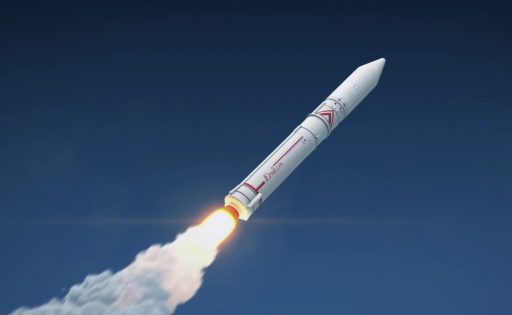
The Enhanced Epsilon, also known as Epsilon-2, is a Japanese expendable launch system designed to lift small payloads at affordable cost.
The all-solid launch vehicle uses a number of heritage components flown on different rockets and its major objective is to provide a low-cost launch capability for small scientific spacecraft. An optional liquid-fueled upper stage provides injection capability into a variety of orbits including Sun Synchronous Orbit.
Epsilon was developed from the ground up as an highly autonomous launch system to reduce the personnel needed to operate the rocket, also introducing a remote launch control capability as a cost-cutting measure.
The project was started by the Japanese Aerospace Exploration Agency JAXA in 2007 as a follow-on to the M-V rocket that was retired in 2006. Epsilon was initiated to reduce cost as M-V launches were deemed too expensive, coming at a price of up to $90 million.
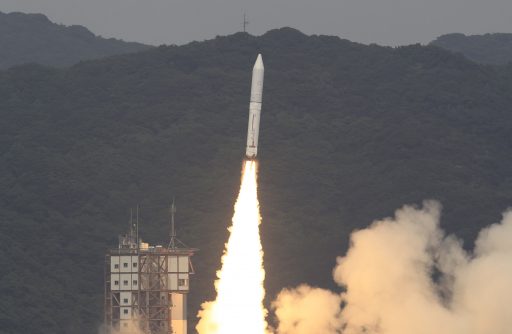
The initial goal of the Epsilon was $20 million per launch, but half the cost of the M-V turned out to be more realistic – at least for the first phase of the rocket’s career.
Epsilon successfully completed its inaugural launch in 2013, flying in the ‘Epsilon CLPS’ four-stage configuration and delivering the SPRINT-A solar observatory into orbit.
The Epsilon-2 configuration is considered to be the operational Epsilon vehicle, introduced on the rocket’s second flight and featuring a number of changes to the initial Epsilon configuration to optimize its performance, increasing the rocket’s payload capability by around 30%. Compared to the first Epsilon, the enhanced version employs a more powerful second stage with greater fuel load and eliminates deployable nozzle extensions on the second and third stages in favor of rigid nozzles that do not require in-flight deployment. Epsilon-2 also offers a larger payload envelope and the optional fourth stage holds more propellant for higher performance.
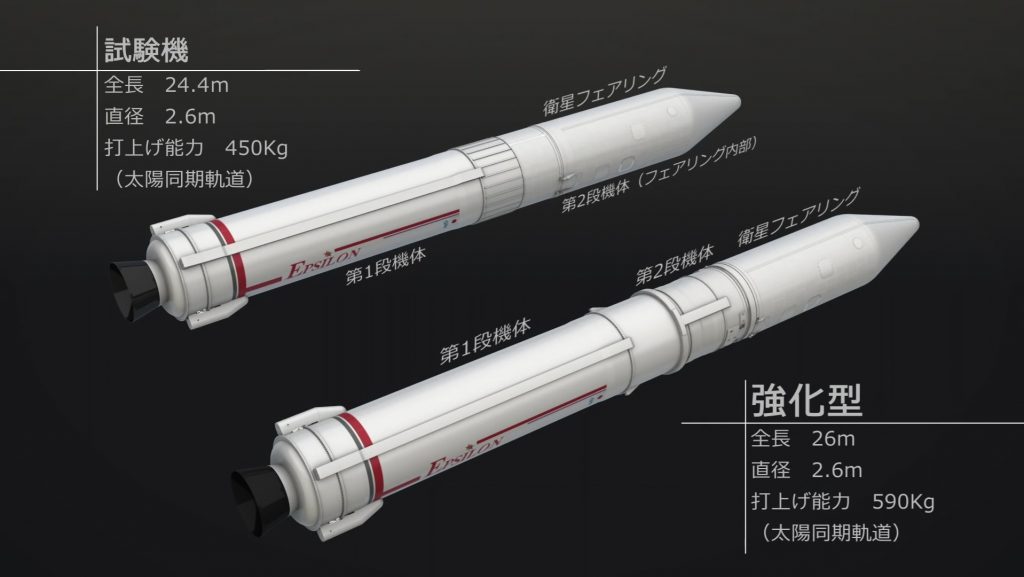
| Type | Epsilon-2 |
| Height | 26.0m |
| Diameter | 2.6m |
| Launch Mass | 95,100kg (3-Stage), 95,600kg (4-Stage) |
| Stage 1 | SRB-A3 |
| Stage 2 | M-35 |
| Stage 3 | KM-V2c |
| Stage 4 | Post Boost Stage, CLPS (Optional) |
| Mass to LEO | 1,500kg (3-Stage) |
| Mass to SSO | 590kg (4-Stage) |
| Mass to HEO | 365kg (3-Stage, 31,000km Apogee) |
The major cost-cutting measure of the Epsilon Rocket is the replacement of the expensive M-V first stage with an SRB-A3 Solid Rocket Motor that is used as a booster on the Japanese H-II rockets. The second and third stage of Epsilon are modified versions of the third and fourth stages developed for M-V.
Epsilon can fly in a three-stage configuration and also in a four-stage variant with a liquid-fueled Post-Boost Stage known as the Compact Liquid Propulsion Stage (CLPS) for optimized insertion into Sun Synchronous Orbit.
Epsilon-2 stands 26 meters tall, is 2.5 meters in diameter and has a liftoff mass of 95 metric tons, operated from the Uchinoura Space Center, formerly known as the Kagoshima Space Center.
The Epsilon-2 version is 1.6 meters taller and around four metric tons heavier than the initial Epsilon launch vehicle. The difference in weight is due to the use of a more powerful second stage while the difference in vehicle length is the result of longer interstage compartments on the second and third stages due to the switch from deployable nozzle extensions to rigid vacuum-optimized engine nozzles.
Epsilon-2 with three stages can deliver payloads of up to 1,500 Kilograms to a 200 by 500-Kilometer Low Earth Orbit. With PBS as fourth stage, the vehicle can reach Sun Synchronous Orbits with a payload capacity of 590 Kilograms.

First Stage
| Type | SRB-A3 |
| Diameter | 2.5m |
| Length | 11.68m (w/o Interstage) |
| Launch Mass | 74,500kg |
| Propellant | Solid – BP-207J |
| Propellant Mass | 66,000kg |
| Motor Case | Monolithic Carbon-Fiber- |
| Reinforced Polymer | |
| Thrust (SL) | 2,150kN |
| Thrust (Vacuum) | 2,350kN |
| Nominal Pressure | 11.1MPa |
| Burn Time | 109sec |
| Specific Impulse | 283.6sec |
| Control | Electric MNT Vector Control |
| Roll Control | Solid Motor Side Jet |
| 1/2 Interstage | 2.32m |
The first stage of the Epsilon Launch Vehicle is a modified SRB-A3 solid rocket booster. These boosters are used on the H-IIA and H-IIB launch vehicle to provide extra thrust in the initial flight phase, also planned to be a part of JAXA’s future H-III rocket.
SRB-A3 configured as Epsilon first stage is 11.68 meters long and 2.5 meters in diameter capable of holding 66,000 Kilograms of propellants. The Booster Motor Case consists of Monolithic Carbon Fiber Polymer with an inert mass of approximately 9.3 metric tons – around 200kg lighter than the Epsilon-1 first stage through additional mass-reduction measures.
The first stage has a total mass of 74,500kg and has an average vacuum thrust of 2,350 Kilonewtons (236,000 Kilogram force) using BP-207J-based propellant. Sea level thrust is about 2,150kN.
Control during first stage flight is provided by an electromechanical Thrust Vector Control System consisting of two servo motors that gimbal the nozzle of the booster to control pitch and yaw. Power to the MNTVC is provided by a special high-power thermal battery that activates just seconds prior to liftoff. Roll control is provided by a Solid Motor Side Jet that is generated by a solid propellant gas generator, employing an evolved system from the original Epsilon.
The booster burns for 109 seconds which accelerates the launch vehicle to a speed over 2.5 Kilometers per second, typically followed by a coast phase of variable duration that a) allows residual thrust on the motor to tail off and b) permits the vehicle to climb in altitude ahead of firing the upper stages.
SRB-A3 being attached to an H-IIB
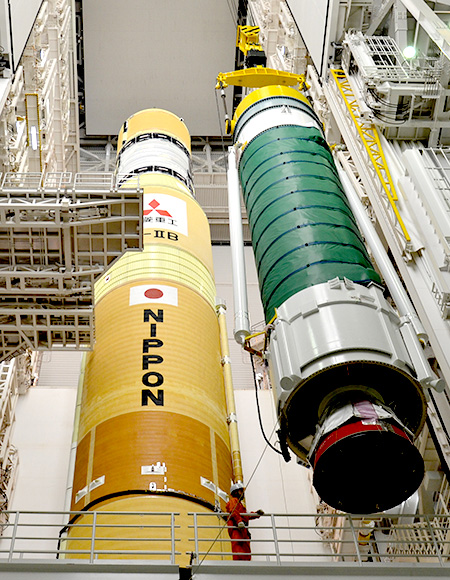
Second Stage
| Type | M-35 |
| Diameter | 2.5m |
| Length | 5.16m |
| Launch Mass | 17,200kg |
| Propellant | Solid – PB-Based |
| Propellant Mass | 15,000kg |
| Thrust (Vacuum) | 445kN |
| Nozzle | Vac-Optimized |
| Burn Time | 129sec |
| Specific Impulse | 295sec |
| Control | Electric MNT Vector Control |
| Roll Control | Solid Motor Side Jet |
| Coast Control | Hydrazine RCS (3rd Stage) |
The second stage of the Epsilon-2 rocket, designated M-35, is a modified version of the M-34c second stage used on the initial Epsilon vehicle which itself was an adapted version of the M-34 stage employed by the M-V rocket.
Stage 2 represents the biggest change from the first Epsilon to the operational enhanced Epsilon version. It comprises a rocket motor case and vacuum-optimized nozzle plus roll control side jet.
Compared to M-34c, the M35 rocket stage hosts a slightly lengthened composite case also increasing from a 2.2 to a 2.5-meter diameter to hold 15,000 Kilograms of solid propellant – providing a longer burn time and higher performance. Additionally, the engine nozzle of M-35 is a rigid design and no longer uses a deployable extension, increasing the overall stage length from 4.3 to 5.16 meters.
The propellant used on the second stage is also changed from a formulation known as BP-205J to a cheaper Polybutadiene-based propellant that delivers slightly better performance characteristics, generating around 45 metric ton-force of thrust over a burn of approximately two minutes.
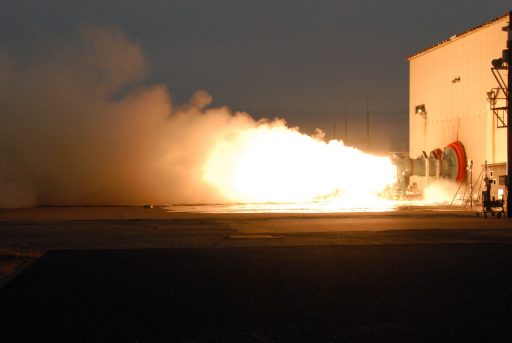
The nozzle uses an electromechanical Thrust Vector Control System to control vehicle motion around the pitch and yaw axis while a side jet is in charge of roll control, fed with tapoff gas from the solid rocket motor. The upper stage’s Hydrazine Reaction Control System is used for vehicle control during coast phases.
The larger engine nozzle of the second stage required the interstage adapter connecting the first & second stage to be lengthened from 1.6 to 2.3 meters. It remains attached to the first stage at separation using a pyrotechnic- and spring-actuated separation system.
On the demonstration version of Epsilon, the upper section of the second stage was protected directly by the payload fairing which interfaced directly with the interstage adapter. On Epsilon-2, the second stage has an outer skin protecting it from the launch environment, interfacing directly with the payload fairing..
Second Stage Nozzle
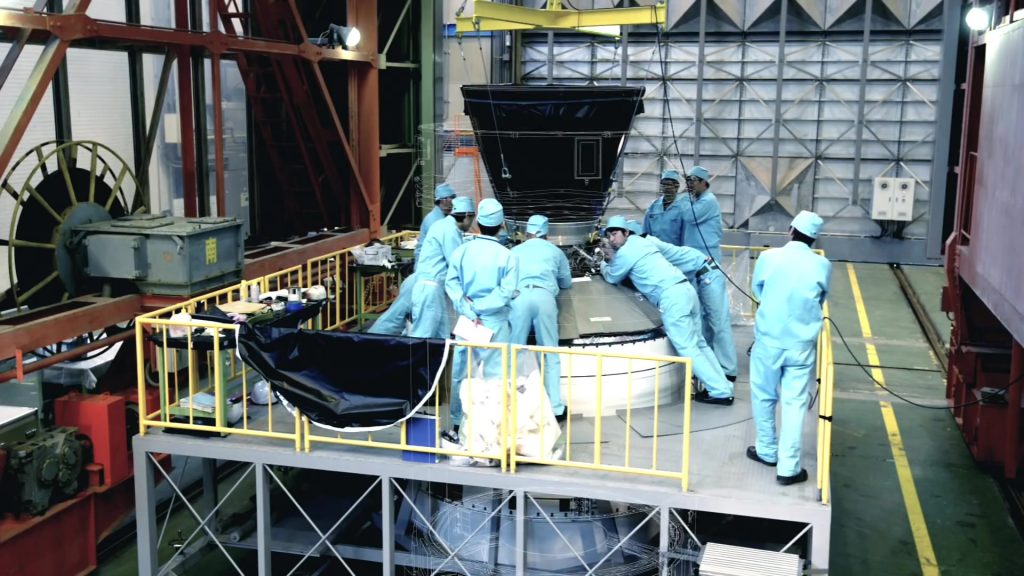
Third Stage
| Type | KM-V2c |
| Diameter | 1.45m |
| Length | 2.25m |
| Launch Mass | 2,900kg (with EMS) |
| Propellant | Solid – HTPB |
| Propellant Mass | 2,500kg |
| Thrust (Vacuum) | 99.6kN |
| Nozzle | Vacuum-Optimized |
| Burn Time | 89sec |
| Specific Impulse | 299sec |
| Stabilization | Spin-Stabilized |
The third stage of the Enhanced Epsilon Rocket is a spin-stabilized Solid Rocket Motor, designated KM-V2c. It is a slightly modified version of the KM-V2b rocket stage used on the basic Epsilon vehicle which itself is based on the KM-V2 of the M-V rocket.
The major change between KM-V2b to V2c is related to the engine nozzle, switching from a deployable nozzle extension to a rigid, vacuum-optimized nozzle to reduce overall system complexity and cut weight which increases the rocket’s performance.
KM-V2c is around half a meter longer than its predecessor, comprised of a composite casing and nozzle section. The upper section of the 1.45-meter diameter case resides in what is known as the Equipment Mounting Structure.
The Equipment Mounting Structure comprises a cylindrical upper section consisting of a metal grid structure and a tapered lower section to interface with the larger 3rd stage diameter.

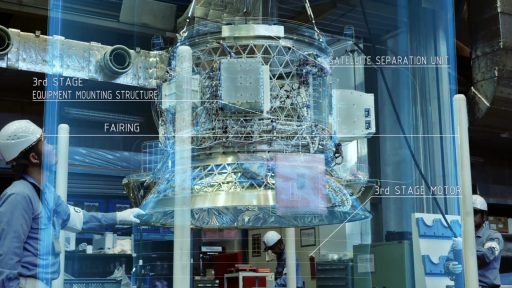
Mounted on the perimeter of the upper cylinder are the various avionics boxes hosting the launcher’s navigation sensors, flight computers and command/telemetry transceivers. On the upper side of the EMS resides the payload adapter, a standardized 97-centimeter adapter suitable for a number of satellites. The rocket’s optional fourth stage can be built into the EMS structure, increasing its mass by 300 Kilograms.
The EMS of the enhanced Epsilon is shortened by around 0.3 meters from the original design to cut mass and free up more space under the payload fairing for the payload.
KM-V2c uses HTPB based propellant to generate an average thrust of 99.6 Kilonewtons (10,150kgf) over the course of an 89-second burn. The stage is spin-stabilized – using spin-up motors installed on the upper portion of the second stage composite tank which separates after spin up so that the third stage does not have to carry the dead weight of the motors. Spin-down at the end of the third stage burn is accomplished with a reaction nozzle.
.
Fourth Stage – PBS
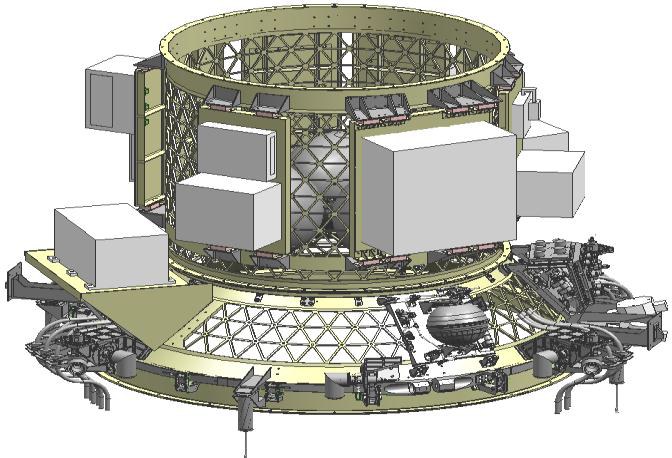
| Type | PBS – Post Boost Stage |
| Diameter | 2.0m |
| Length | 1.3m |
| Launch Mass | 400kg |
| Propellant | Hydrazine |
| Propellant Mass | 145kg |
| Thrust (Vacuum) | 0.4kN |
| Burn Time | Up to 1,300sec |
| Specific Impulse | 215sec |
| Attitude Control | Hydrazine RCS |
The Enhanced Epsilon can be outfitted with an optional Post Boost Stage (PBS), also known as the Compact Liquid Propulsion Stage (CLPS). Flying with PBS gives the launch vehicle precise injection capabilities and is typically used for Sun-Synchronous deliveries while missions to elliptical orbits are handled by the three-stage version to increase performance.
Unlike the other stages of Epsilon, the Post Boost Stage uses liquid propellant in the form of Hydrazine that is consumed by a small liquid-fueled engine to deliver 0.4 Kilonewtons of thrust (40.8kg).
PBS represents an integrated system that is installed on the Equipment Mounting Structure which is part of both, the three and four-stage version of the rocket and builds the interface between the launch vehicle and payload, also hosting the avionics and communications systems of the launcher. (See Stage 3 Section for more info on the EMS)
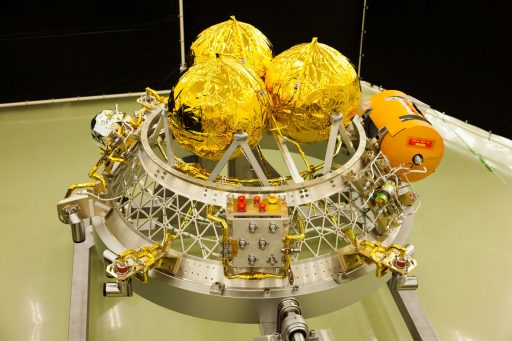
The fourth stage is added by installing a central Hydrazine tank in the center of the Equipment Mounting Structure and adding a series of monopropellant thrusters for main propulsion and attitude control. PBS adds approximately 300 Kilograms to the EMS mass. The EMS/PBS complex is around 1.18 meters long and 1.2 meters in diameter.
The PBS of the Enhanced Epsilon rocket features a central tank that measures 65 centimeters in diameter and holds around 145 Kilograms of Hydrazine. PBS flown by the first Epsilon iteration hosted three 42-centimeter tanks with a total capacity of 120 Kilograms. The higher propellant capacity allows PBS to fire over three minutes longer than its predecessor, giving it additional flexibility.
Typically, the PBS performs orbital maneuvers after the third stage of the launcher delivered the stack to a preliminary orbit. Comparing with the three-stage version, PBS reduces Perigee Error by 5km, Apogee Error by 80km and inclination errors by 1.8 degrees. PBS has multi-start capability, and, in a normal mission, should be fired at least twice for a precise orbital injection.
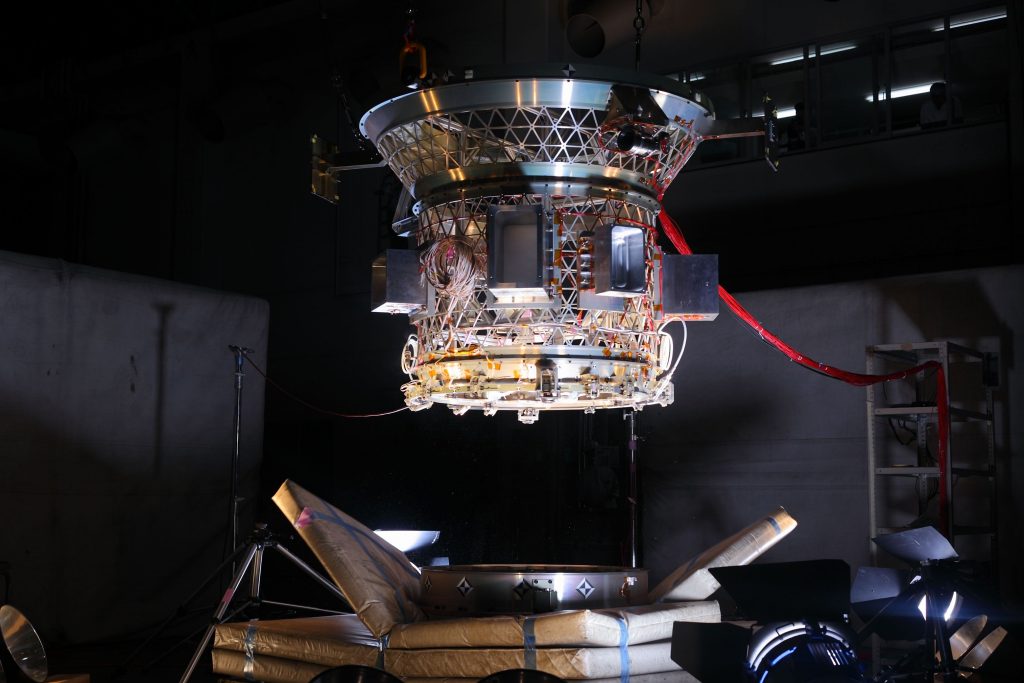
Payload Fairing
| Diameter | 2.5m |
| Length | 9.19m |
| Mass | 700kg |
| Sep Altitude | 150km |
| Notes | Protects Payload & Stages 3 & 4 |
The Payload Fairing of the Epsilon launcher is 2.5 meters in diameter and 9.19 meters long – providing a sizeable envelope for various payload sizes. The payload envelope within the fairing is 1.9 meters in diameter and 5.4m in height.
The fairing design from the first Epsilon Version to the Enhanced Epsilon has not been changed, however, the payload envelope has been extended by 1.5 meters. This extension was possible by no longer requiring the fairing to protect the entire second stage which was the case for Epsilon-1.
Injection Accuracy
| Rocket Configuration | 3 Stages | 4 Stages w/ PBS | 3 Stages |
| Target Orbit | 500km SSO | 500km SSO | HEO (200 x 33,100km) |
| Perigee | +/- 25km | +/- 20km | +/-25km |
| Apogee | +/- 100km | +/-20km | +/-2,000km |
| Inclination | +/- 2.0° | +/- 0.2° | +/-2.0° |

Typical Flight Profile
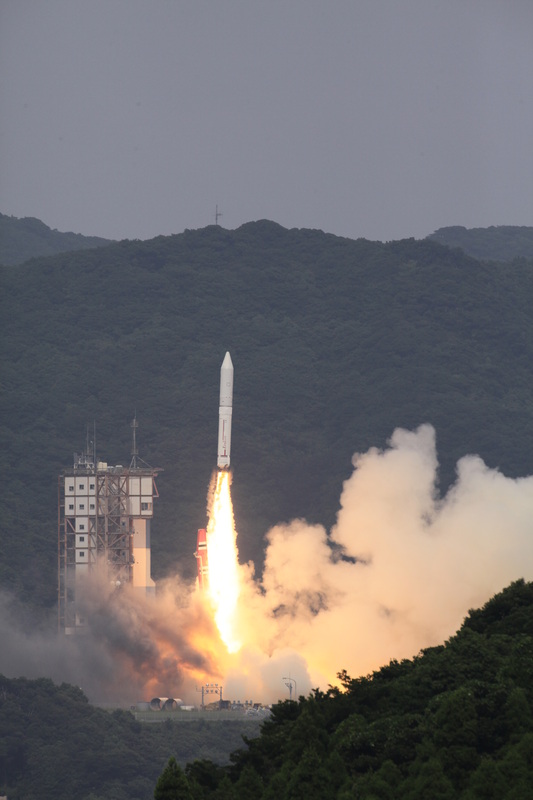
Following a short countdown of just three hours that features vehicle health checks, computer reconfigurations and flight software load, the SRB-A3 first stage is ignited and begins a short vertical climb before pitching and rolling onto the pre-determined ascent trajectory.
The first stage burns for about 1 minute and 54 seconds before shutting down at an altitude of 90 Kilometers. At that point, the vehicle uses its forward momentum to coast uphill. At T+2:30, the vehicle is nearly 150 Kilometers in altitude allowing the fairing to be jettisoned. First stage separation comes at around T+2:40 followed by second stage ignition four seconds later at an altitude of 155 Kilometers. The second stage burns for around two minutes.
After shutdown on the M-35, the vehicle enters a six-minute coast phase (for SSO missions) to climb uphill to apogee so that the third stage burn can serve as circularization maneuver – raising the perigee and boosting the stack into orbit. Prior to separation, the second stage completes the spin-up for the third stage burn of one and a half minutes, followed by spin down and stage separation after residual thrust tailed off.
Following several minutes after staging, the PBS performs its first burn to optimize the orbit and raise the stack’s altitude.
The second PBS firing usually comes after half an orbit at about T+50 minutes to place the vehicle into its desired trajectory.
Following third stage separation, the PBS can perform a number of flight scenarios to deliver the vehicle to a variety of orbits and trajectories.
Advanced Technology
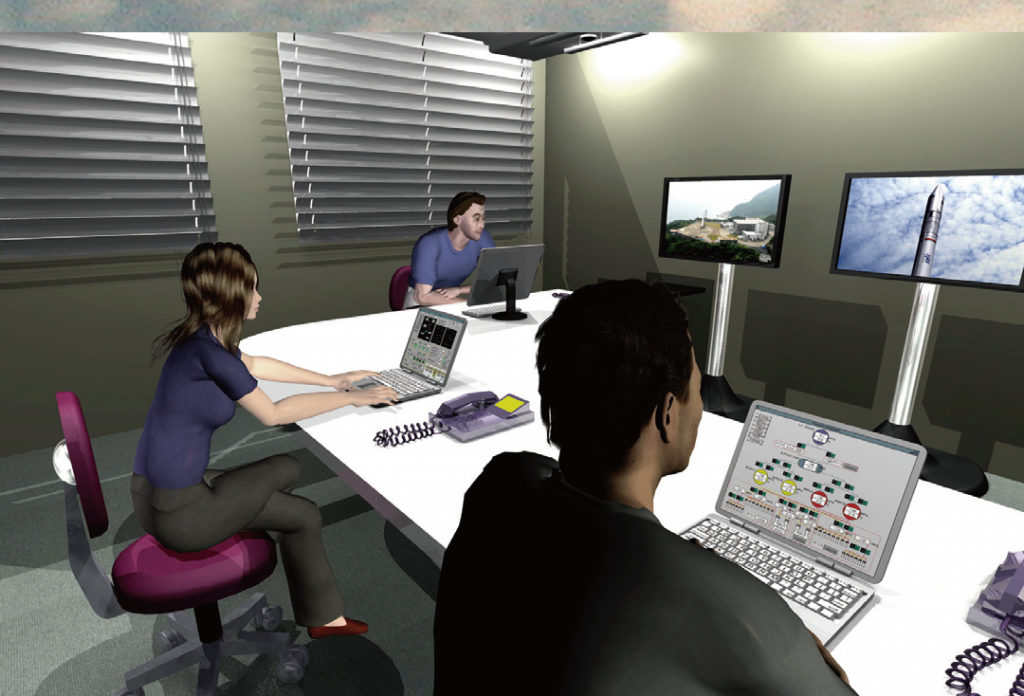
Epsilon has been designed to feature a number of advanced technologies and techniques to simplify launch vehicle operations, speed up the launch preparation process and minimize personnel requirements and cost.
The production process of Epsilon uses new technologies and processes so that a spacecraft can be launched within one year of the signing of the launch contract instead of three years that were required for M-V. The launch campaign at the launch complex has also been shortened. The assembly process of the Epsilon launcher at the Pad can get underway as late as seven days before liftoff compared to a campaign of 42 days for M-V. The launch countdown has also been shortened from nine to three hours.
Epsilon employs a number of innovations that increase the autonomy of the launcher and its state-of-the art computers. Checks during the countdown will be performed automatically by the vehicle to reduce time consumption for checks as well as launch control personnel. The launcher has been designed for operations via a Remote Launch Control Center that uses a secure internet connection to access the rocket that could be launched from any point on Earth.
These systems will be refined during the operation of Epsilon to ultimately develop a fully autonomous launcher that can make decisions such as Range Safety and Flight Termination on its own using its artificial intelligence.
Also, Epsilon uses components that can easily be shared with other launchers through the use of common interfaces
